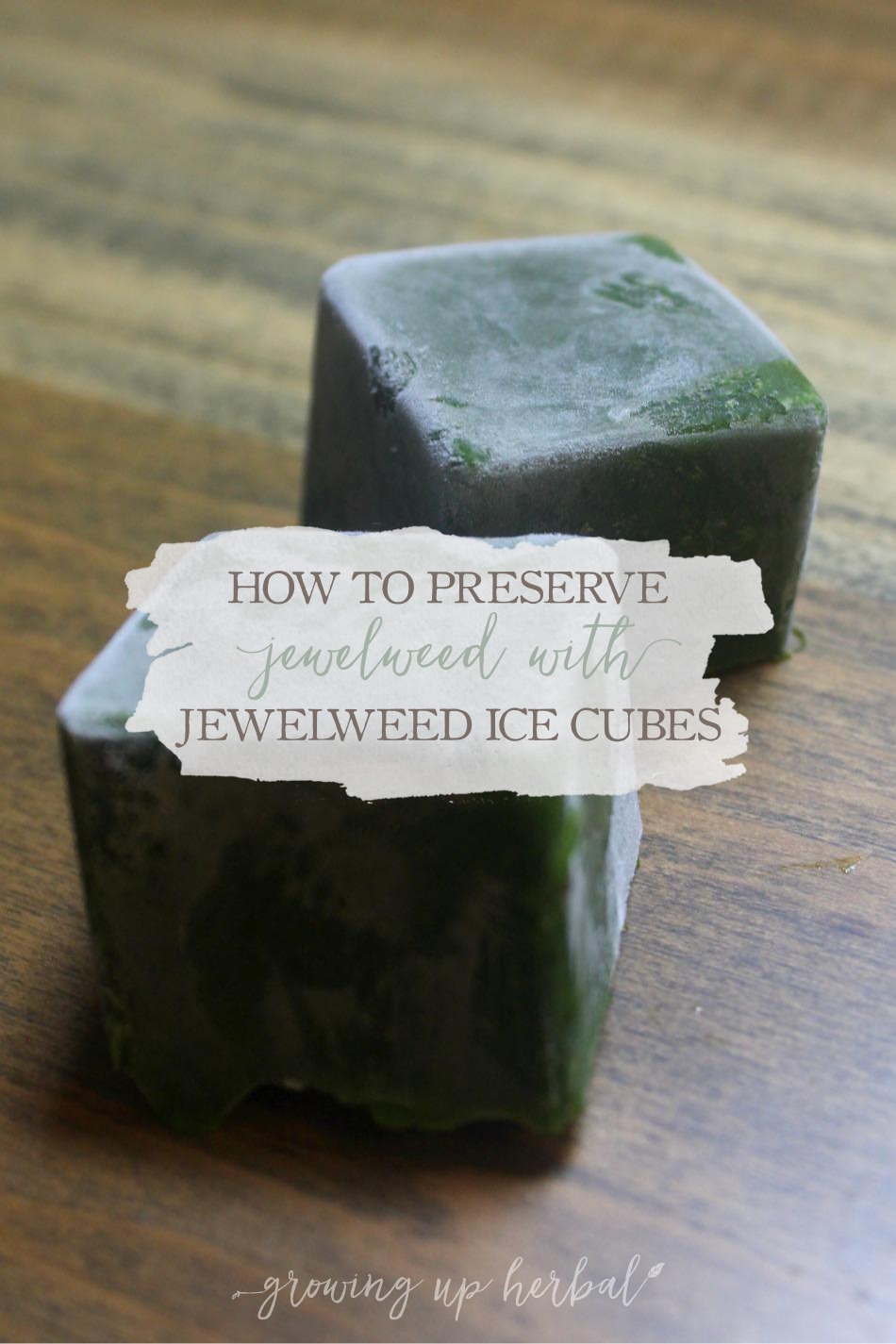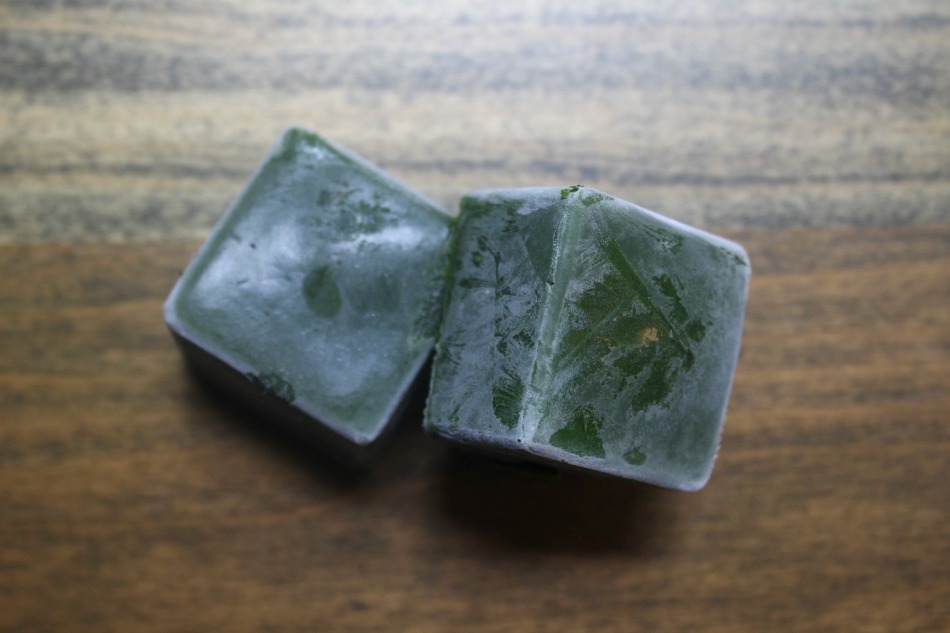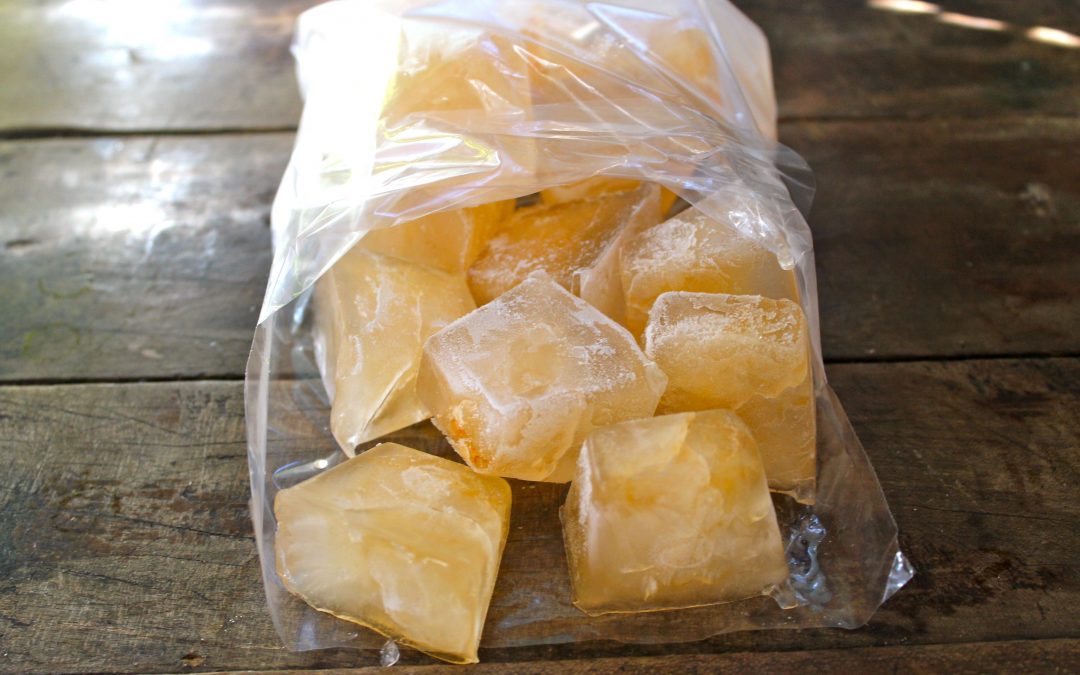
What do you do when you end up with a bad case of poison oak in the middle of winter, especially when your go-to poison ivy plant, jewelweed, is nowhere to be found?
I’ve been there, and trust me, it’s no fun. Sure, there are other plants and natural products you can use to soothe the skin and reduce inflammation, but in my experience, nothing beats good ole’ jewelweed when it comes to poison oak or ivy.
If you don’t want to be in the above situation, I have just the thing for you.
Today, I will share how I preserve jewelweed when it’s growing abundantly in the summer months so I always have it on hand during the cold, winter days when it’s no longer available outside. I will also share how I turn those lovely, juicy stalks of jewelweed into jewelweed ice cubes.
Jewelweed ice cubes are easy to store and use when needed, just in case you develop poison oak rash in the dead of winter.
Yes, You Can Get Poison Oak In Winter
Poison oak is a vine that often climbs trees. In the spring and summer, it has leaves to distinguish it, but when cold weather comes and the leaves die, all that is left is the vine. Unfortunately, the vine part of the plant still contains an oleoresin called “urushiol” that binds to receptors on the skin’s surface, stimulating an immune response and eventual rash, even in the dead of winter. If you touch the vine, the oils transfer to your hand and then anywhere else your hands touch. A couple of days later, depending on how strongly your immune system responds to the oils, a rash will appear.
How Jewelweed Helps Soothe Itchy Skin
It’s not entirely known how jewelweed soothes skin and reduces inflammation, but a couple of thoughts exist about its actions on plants like poison oak and ivy.
One thought is that the plant chemical “lawsone” is responsible for jewelweed’s ability to prevent and/or minimize the itchy rash. This chemical is thought to bind to the same receptor sites on the skin’s surface that urushiol binds to (Duke, 1998). This is how jewelweed, when used before or soon after exposure to these plants, can prevent or minimize the chance of a rash forming. The immune system doesn’t sense a threat once these receptor sites bind with lawsone instead of urushiol. Therefore, no immune response is needed, and no rash forms.
The next thought is that the saponins found in jewelweed prevent the urushiol from binding to receptor sites much like soap does. In fact, a 2012 study showed that washing the skin with plain soap after contact with poison ivy was most effective at removing the oils, therefore, preventing a rash from forming and that using a mash of fresh jewelweed was a close second (Motz et. al., 2012).
Preserving Jewelweed For Winter
I’m not sure how many times I ended up with a poison oak rash during the winter months before I learned to preserve jewelweed so that I would have it on hand the next time it happened, but I finally figured out what to do with it.
Seeing how the juice of jewelweed soothes itchy rashes, I decided I needed a way to extract and preserve that fresh juice. Making jewelweed ice cubes seemed like the perfect answer.
There are two different ways to preserve jewelweed for winter by making ice cubes. One method results in a stronger, more concentrated ice cube, and the other results in a weaker, more diluted ice cube. The concentrated jewelweed ice cubes take more time and work to make, whereas the diluted ice cubes are quicker and easier. So, the choice is up to you.
I will say that harvesting smaller jewelweed plants in late spring or early summer, when they’re at their juiciest, makes it much easier to make the concentrated jewelweed ice cubes. Waiting until later in the summer, when the jewelweed has grown tall and flowered, makes it a bit more difficult to make the concentrated ice cubes, so you may want to go with the diluted version instead.
Concentrated Jewelweed Ice Cubes

To make the concentrated jewelweed ice cubes, you’ll need a juicer (this is the one I have) and a lot of small jewelweed plants. Now, when I say “small” jewelweed plants, I don’t necessarily mean short… I mean, the stem should be no thicker than your pinky finger. The thicker they are, the more fibrous they are, making the juicing process longer and harder.
To make your ice cubes, run the jewelweed plants through the juicer and collect the green slime that comes out. Toss the fibrous parts into the compost bin or use them as plant mulch. Next, take the green slime, put it in an ice cube tray, and freeze it for 24 hours. After 24 hours, remove the jewelweed ice cubes from the tray and store them in a container in the freezer until you need them.
To use them, simply let one or two de-thaw in the refrigerator and use them like fresh jewelweed.
Diluted Jewelweed Ice Cubes
To make diluted jewelweed ice cubes, you’ll need water, a saucepan, and jewelweed plants.
Simply chop your jewelweed plants into small pieces, place them in a saucepan and cover them with water, and decoct them over low heat until they’re reduced in half (the lawsone should come out and turn the liquid a nice orange color). Next, strain the plant pieces from the liquid and compost them before freezing the liquid in an ice cube tray for 24 hours.
Let your diluted jewelweed ice cubes melt in a bowl and dab this on the poison oak/ivy as often as you can remember.
It Pays To Be Prepared
I’ve had the most success keeping itchy rashes away using the concentrated jewelweed ice cubes, but the diluted ones work too. I make both, depending on what time of the year I harvest the jewelweed. These ice cubes can stay frozen for up to a year, and it’s a good idea to make a fresh batch each year.
So here’s your to-do for the day. If you can identify jewelweed and you’ve found some growing in your area, collect some and make your jewelweed ice cubes this week. Come winter and the possibility of a poison oak rash (or some other itchy, weepy rash), you’ll be prepared! Then, share a photo of it with me on Instagram by tagging #growingupherbal so I can check it out!
REFERENCES:
Duke, J. A. (1998). The green pharmacy: the ultimate compendium of natural remedies from the worlds foremost authority on healing herbs. New York, NY: St. Martins Press.
Motz, V. A., Bowers, C. P., Young, L. M., & Kinder, D. H. (2012). The effectiveness of jewelweed, Impatiens capensis, the related cultivar I. balsamina and the component, lawsone in preventing post poison ivy exposure contact dermatitis. Journal of Ethnopharmacology, 143(1), 314-318. doi:10.1016/j.jep.2012.06.038

Seriously, how you get poison oak in middle of the winter? I never heard of that…
Oh the things to understand and learn.. so the vine is the culprit, good to know..so much to learn, if I’m ever stuck in the woods..❤️Wow thanks Meagan
Hey I was wondering if I could take that liquid and incorporate it into a salve to have a similar treatment?
You can if you’re planning on using the salve within a few days to a week and then trashing it. Adding the jewelweed juice into a salve will add water to your salve and cause it to spoil faster so it would need to be refrigerated and used quickly.